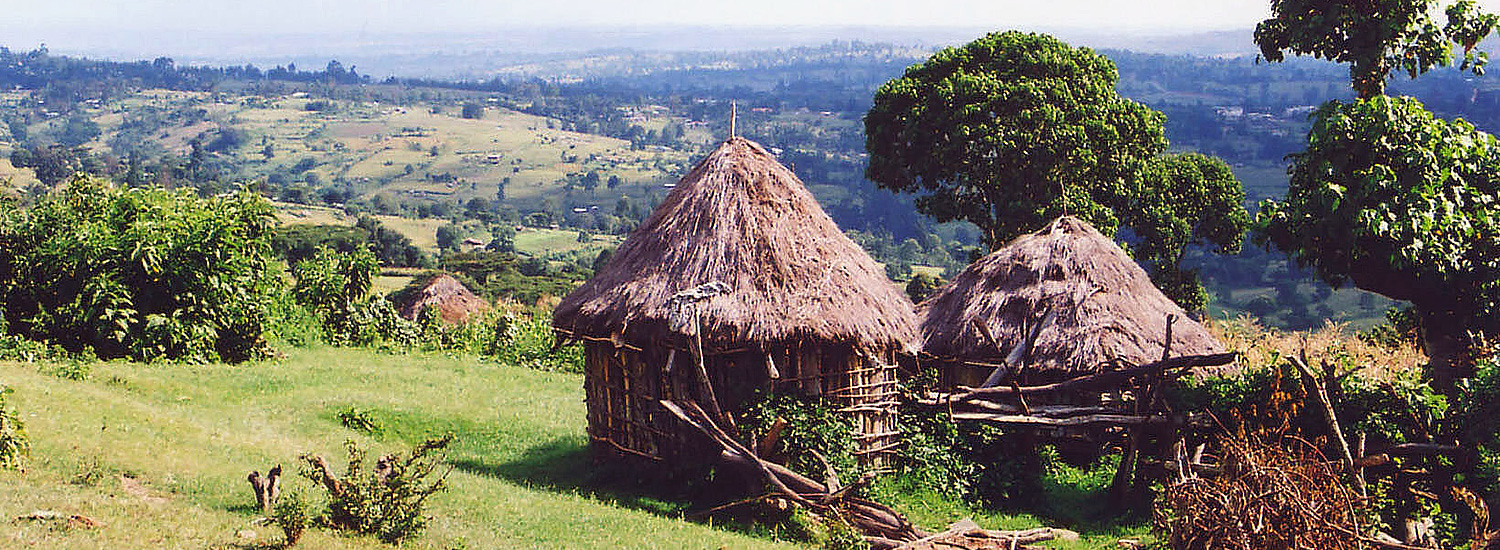
Lamu Museums are located in the Lamu Archipelago on the N. Coast, one of the most beautiful & serene locations on the African continent and a World Heritage Site
The isolated island, with streets so narrow such that donkeys provide almost the only mode of transport makes the town quite unique.
Main museums are as shown below:
The construction of Lamu Fort commenced in 1813, shortly after Lamu’s victory over Pate and Mombasa in the battle of Shela. This major building task was reputedly undertaken with the cooperation of Seyyid Said, the Sultan of Oman who was then cultivating a promising new alliance with Lamu.
Upon its completion in about 1821 the fort marked the Southern corner of the traditional stone town and served as a garrison for Baluchi soldiers sent by the Sultan of Oman. Its protective presence encouraged new development around it. Thus confident Merchants erected the 19th century shopfront and buildings. By 1900 the Fort had become the image of the community, a role which it still plays to date.
German nationals Clement Denhardt and G. A. Fisher first made contact with the Lamu hinterland in the late 1870s. They soon struck a friendship with Ahmed Abdullah Simba, the Sultan of Witu, who at the time was having problems with the rulers of Lamu and Zanzibar and so welcomed a new ally. Shortly afterwards, Witu became a German protectorate.
This building was the first German Post Office ever established along the East African coast. The Post office was established on November 22nd 1888 by the Germans, led by Clement Denhardt. The communications and trade contacts for the German Protectorate in Witu could at the time be served through Lamu, a well-established town with links to the outside world.
The Post office operated for more than two years before its closure on March 3rd 1891 after the withdrawal of the German settlement in Witu.
German Post Office Museum is located in Lamu old town, Lamu district in Coast Province.
The construction of Lamu Fort commenced in 1813, shortly after Lamu’s victory over Pate and Mombasa in the battle of Shela. This major building task was reputedly undertaken with the cooperation of Seyyid Said, the Sultan of Oman who was then cultivating a promising new alliance with Lamu.
Upon its completion in about 1821 the fort marked the southern corner of the traditional stone town and served as a garrison for Baluchi soldiers sent by the Sultan of Oman. Its protective presence encouraged new development around it, for example it was at this time that some Lamu merchants erected the 19th century shopfront and buildings. By 1900 the Fort had become a central to the community, a role which it still plays today.
It served as a prison from 1910 to 1984 to both the British colonial regime and the Kenya government, before it was handed over to the National Museums of Kenya in 1984. Efforts to turn the Fort into a museum were started with technical and financial assistance from Swedish International Development Agency (SIDA). With its inception as a museum with environmental conservation as its general theme; Lamu Fort is basically a community center for the people of Lamu old town.
The courtyard is available for weddings, meetings and theatre productions. At the ground floor there is a large exhibition space, which most recently hosted the first Environmental Museum in Africa. Upstairs there are administrative offices, laboratories, a workshop and a rooftop with impressive views over the town. There is also an excellent conference facility that is available for hire.
Lamu Fort is a massive two storey stone structure located in Lamu Old town, Lamu District. It lies about 70 meters inland at the main jetty within Grid Reference 114 498 on the Lamu 1:50,000, Kenya Survey Map sheet No. 180/1.
This museum gives visitors a glimpse of the traditional setup of a Swahili home
Houses are usually oblong and built around a small open courtyard. The houses in the few remaining very traditional (and in the recent past poorer) towns such pate, are single- story building, but in a wealthier and crowded town, such as Lamu, most are two-storied and many have three stories, the structurally safe limit. A story is typically added when the occupying family expands by the marriages of its daughters, residence for the first marriages women being uxorilocal. In some grander houses the ground floor was occupied by slaves and used as warehouses, and the family members lived above. Drainage is an important consideration: houses have flat roofs and house drains send the often heavy rainfall into the streets drains, which empty into the sea. The traditional Swahili stone-built houses are complex structures, and here is the only barest outline, to show the house as part of a wide symbolic schema that lies at the base of Swahili notion of purity, ancestry, and status.
The axis of a typical house runs north and south. The entrance to the courtyard is properly at the north end and the owners private rooms are at the south end. The vagaries of the street layouts mean that a staircase from the front door may twist and change directions so as to end up in the right place. The northern end is referred to as upande wa kibla ( the side of the kibla) , the northern and sacred end of a mosque. Houses and mosque should have the same orientations.
The traditional house is a very private place, its outside walls having only holes for ventilation. Light comes from the open courtyard. The entrance is through a large seat-lined porch (daka) raised a foot or two above the street, with a double wooden door traditionally elaborately carved and decorated with geometric or floral and leaf patterns and Quranic inscriptions. The double door opens directly onto an inner porch ( tekani) on the ground floor; in two-story houses one half of the door opens onto the inner porch and the other half onto a flight of stairs leading up one side of the courtyard to the upper floor. The porches are the limits of entrance to casual visitors. The inner porch gives onto the main inner courtyard (kawanda) , a word used for any open working place.
In larger houses, at least there is a well in the courtyard, and a bathroom and toilet in a small room off one of the corners. The main rooms are set to the south of the courtyard: in lamu rain almost never comes from the north. In single- story houses there is a typically a guest room (sabule) directly off the courtyard on the northern side of the inner porch, so that it is far from the main living quarters into which a guest cannot look. In larger houses the sabule is typically at the top of a staircase separate from the main family staircase, and has its own bathroom. In the absence of guests ( who are usually visiting kin or trading partners) , the head of the family may often sleep in the sabule, particularly when his wife has close female kin staying with her; they sleep in the main bedroom, the ndani. There is also typically a staircase leading up the north wall to the roof. Formerly slaves would sleep under the staircases, the space known as sarambi.
On the southern side of the courtyard, facing north and Mecca, lie the living rooms of the owning family, opening directly off the courtyard. There are no separate livings, eating, or sleeping rooms (beds are merely placed in curtained alcoves (ngao) when needed). The rooms are arranged in a series of galleries (misana, single msana) set transversely between the east and west walls. Each inner gallery, farther back from the courtyard, has its floor set a step higher than the preceding level. Doorways are set in the intervening walls mark them from the courtyard and each other, so that to a visitor each set higher and is darker than the nearer one. There are formal ways of being invited farther into the interior of the house. The first of these galleries is a daytime area mainly for sitting and conversing; this is the msana wa tini, the “lower gallery”.
Behind, except in smaller houses, is a second area, msana wa yuu, the “upper gallery”. Both galleries have high painted poles at the ends for the curtains of the sleeping alcoves. Beyond the upper gallery is the most private area, the ndani, “inside” (occasionally called the msana wa kati, “central gallery”), where the wife and husband sleep. This is par excellence the wife’s room. In grander houses these galleries are extremely high and cool, and often have small window-niches at the ends, in which are placed pieces of porcelain for show.
Behind the ndani are the choo, the bathroom-cum-toilet of the ndani, and a smaller space or room, the nyumba ya kati (center of the house), sometimes called chumba cha kati (central room). The bathroom is usually on the left side facing from the courtyard, the nyumba ya kati on the right: the left is polluting, the right not. Each may have its own doorway from the ndani. The latter room has (or has had) two main functions.
It is properly the place for childbirth, the preparation of corpses, and the seclusion of widows; and it was a place for storing the more precious trade good and valuables. It is furnished merely with a bed of the kind called ulili; it may have an exit, a hole blocked with loose removable stones, for passage of the corpse for burial, and a small side door opening to the bathroom so that water can be brought into it easily. This room is found only on the main family floor. The room above is traditionally flat and on it may be a small pent house kitchen (jiko), with its own narrow internal staircase; or the kitchen may be placed in a corner of the courtyard below.
A father should give his daughter at her first marriage her own separate living accommodation linked to his own: either a story may be added, each story occupied by a separate elementary family or he may build or buy an adjoining house. When this is across a street, a bridge (wikio) is built to link the two houses: women can pass from one to the other without being seen from the street below. The working definition of a separate accommodation for each family is that it has its own bathroom-cum-toilet. water comes from wells and cisterns. The toilets are dry pits, vertical ducts set inside the walls; so long as they are kept dry, they are thick and lime-washed, and the ceilings are very high: these houses are cool and relatively dry even though the coastal climate is often very hot and humid.
These houses are not merely “machines for living in”: they are as much symbolic as technical structures. They represent the performance, stability, credit-worthiness, and purity of owning lineage. These qualities are expressed both in the solidarity and layout of parts of a house, and in its external and internal decoration. The outside walls are plain and undecorated, although properly lime-washed, except for the curved outer doors. These imposing gates cut off the outside public world from the private family world within and symbolize the disdain of patrician owners for all others of different rank and ancestry. The internal decoration may be extremely elaborate. There is a marked increase in privacy from the outer porch at one end to the main wife’s room, the ndani, at the other with the nyumba ya kati even more secluded behind that. This is associated not merely with the seclusion of women but essentially with the ndani as the ritual center of the house.
The first two galleries are separated by internal walls, each having two door ways; the wall of the ndani has only one central doorway, so that its interior cannot be seen from the first gallery or the courtyard. Walls have rows of wooden pegs for hanging rugs tapestries. Walls pillars and parts of the walls, as well as door jambs and lintels, are curved and decorated in plaster. The back walls of the msana wa yuu and particularly of the ndani are set with rows niches, vidaka or zidaka(diminutive forms of daka, the outer porch of the house), sent into the plaster. These inches are arched and so shaped that their roof are sloped higher at the back, so that the observer cannot see the join between the roof and back; the backs are also slightly angled relative to one another, so that there is only a single central place from which the entire wall panel can be viewed in proper perspectives. The niches are for displaying porcelain, manuscripts and wedding materials, copies of the Quran and other treasures. Beneath the rows of niches, in the center, is typically a blank rectangle where is placed a bed on which a bride is presented on her wedding. The observer stand in the upper gallery, from which they can best see her seated and surrounded by the beauty of the niches and their contents. In the past rooms occupied by slaves were not plastered but those occupied by free persons had to be, even if they lacked niches: plaster is associated with purity.
Booking is easy! Simply provide the necessary details. Our team will guide you through the booking process and answer any questions you have.
Have more questions? Feel free to reach out to our friendly customer support team. We're here to make your tour experience smooth and memorable!
We understand that circumstances can change. Our cancellation and change policies vary based on the tour and destination. Please review the specific terms in our booking policy or contact our team for assistance.
Our tour packages typically include* accommodations, transportation, guided tours, and specified activities. We provide transparent details about inclusions and exclusions to help you make informed decisions.
*Individual tour details may change.








